Alaska Bear Viewing Guide
Alaska Bear Viewing Tours: How to Pick the Right Experience for You
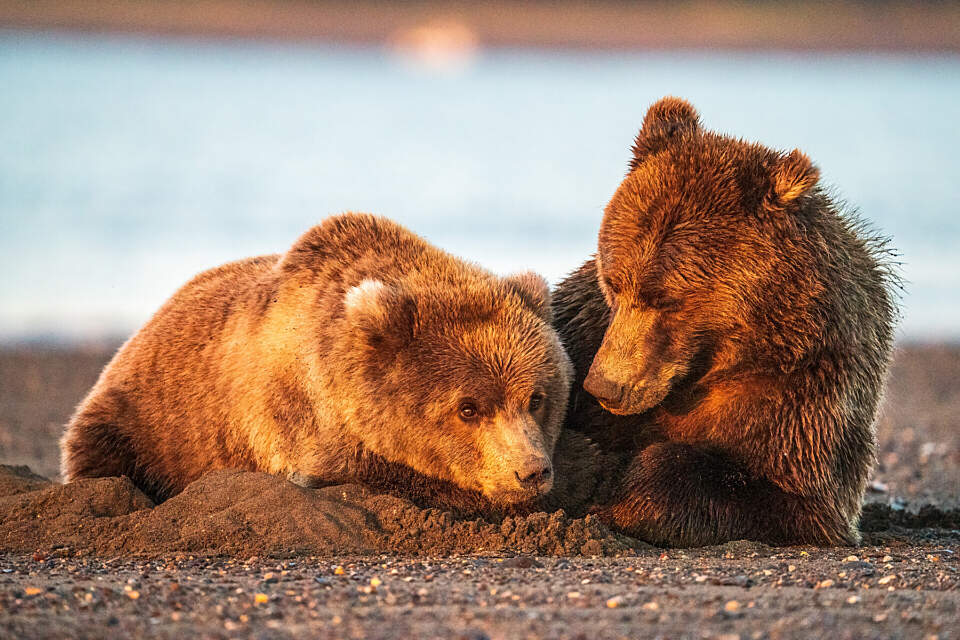
Photo by Linda Roberts
Why See Bears?
Bears are the ultimate symbol of the Alaskan wilderness, embodying strength, resilience, and a wild spirit that has long been associated with this majestic and untamed land. So it’s no surprise that we hear from thousands of visitors a year that bears are just as high on their “must-see” lists as the Northern Lights and Mount Denali.
Is seeing a bear in Alaska Guaranteed?
While you may get lucky and see a bear while hiking or driving, it’s not that likely. If you really want to see a bear during your Alaska trip, the answer is to take a dedicated bear-viewing tour that brings you to places where bears are known to gather and live in dense numbers.
Here are Your Options
1. Fly-in/ Boat-in Bear Viewing Tours
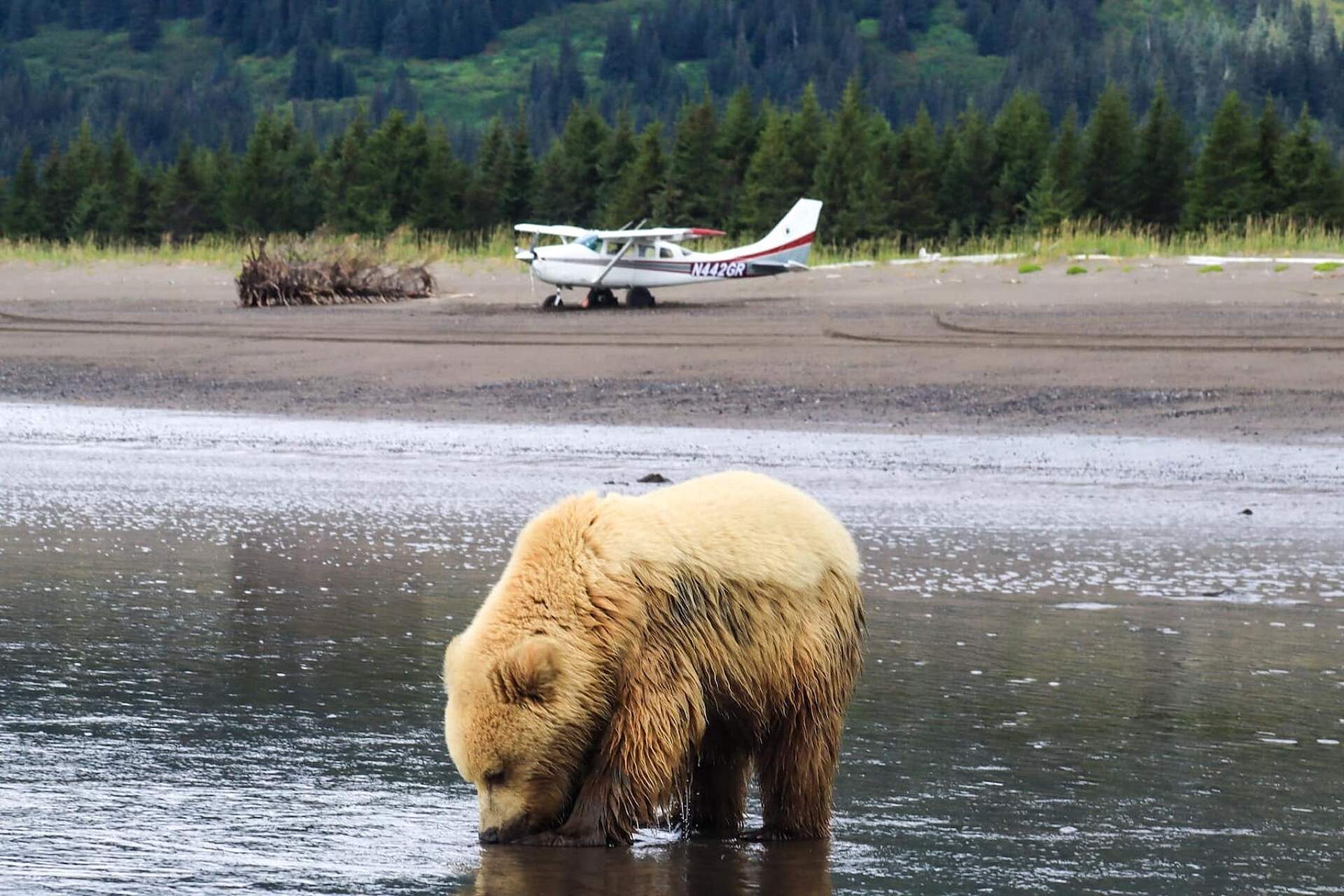
Photo by Alaska Bear Adventures
Seeing a bear is almost guaranteed on a remote fly-in (or boat-in) bear-viewing trip. Pilots and guides closely watch where the bears are throughout the summer and know where to bring their guests for viewing. Most trips are expedition style. You’ll be outfitted with gear like tall rain boots or hip waders and follow your guide to where the bears are. Depending on the time of year, the bears may be fishing, resting, raising cubs, or digging for clams while you watch from a safe distance. These are usually full-day experiences, including an hour or so of flying and 5–6 hours with the bears. The average cost is around $700, with some experiences closer to $1000, depending on the length of your flight and the amount of time on the ground.
2. Bear Viewing Lodges
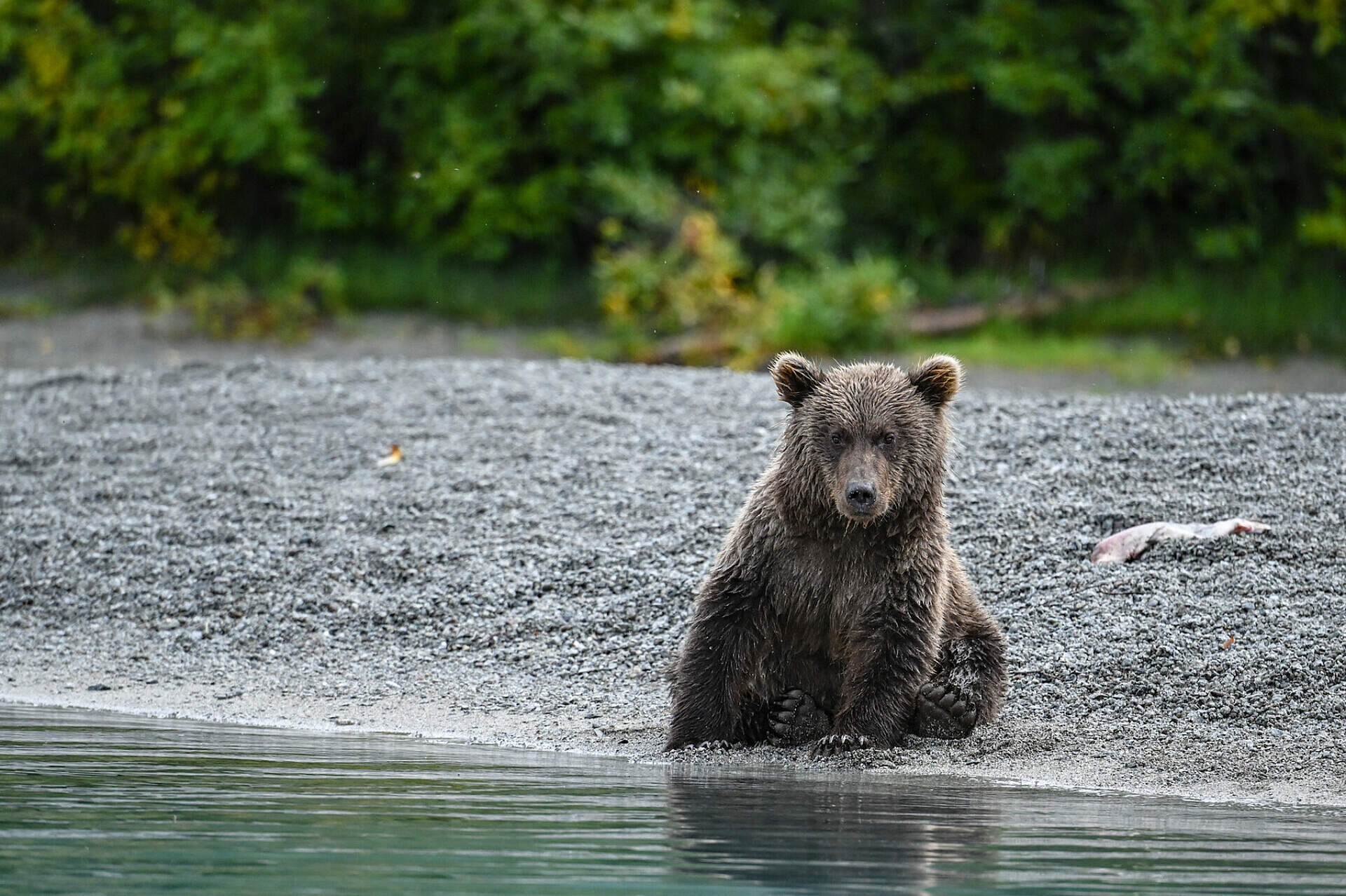
Photo by Kristen Yaldor
Lodges focus on the bear-viewing experience from morning until evening, making this an ideal option for photographers who want to capture the bears in a different light, or for the bear enthusiast who wants the chance to witness different bear behaviors and interactions. And because you’re in the same spot for multiple days, it becomes easy to recognize the “local” bears. You can often spot bears from your cabin or room, but you’ll also take excursions into the wilderness with your guide. You’ll find these lodges in Lake Clark National Park, Katmai National Park (Brooks Lodge), and Kodiak. The cost per person is around $1,800 for an overnight trip.
3. Yacht-based Bear Viewing Tours
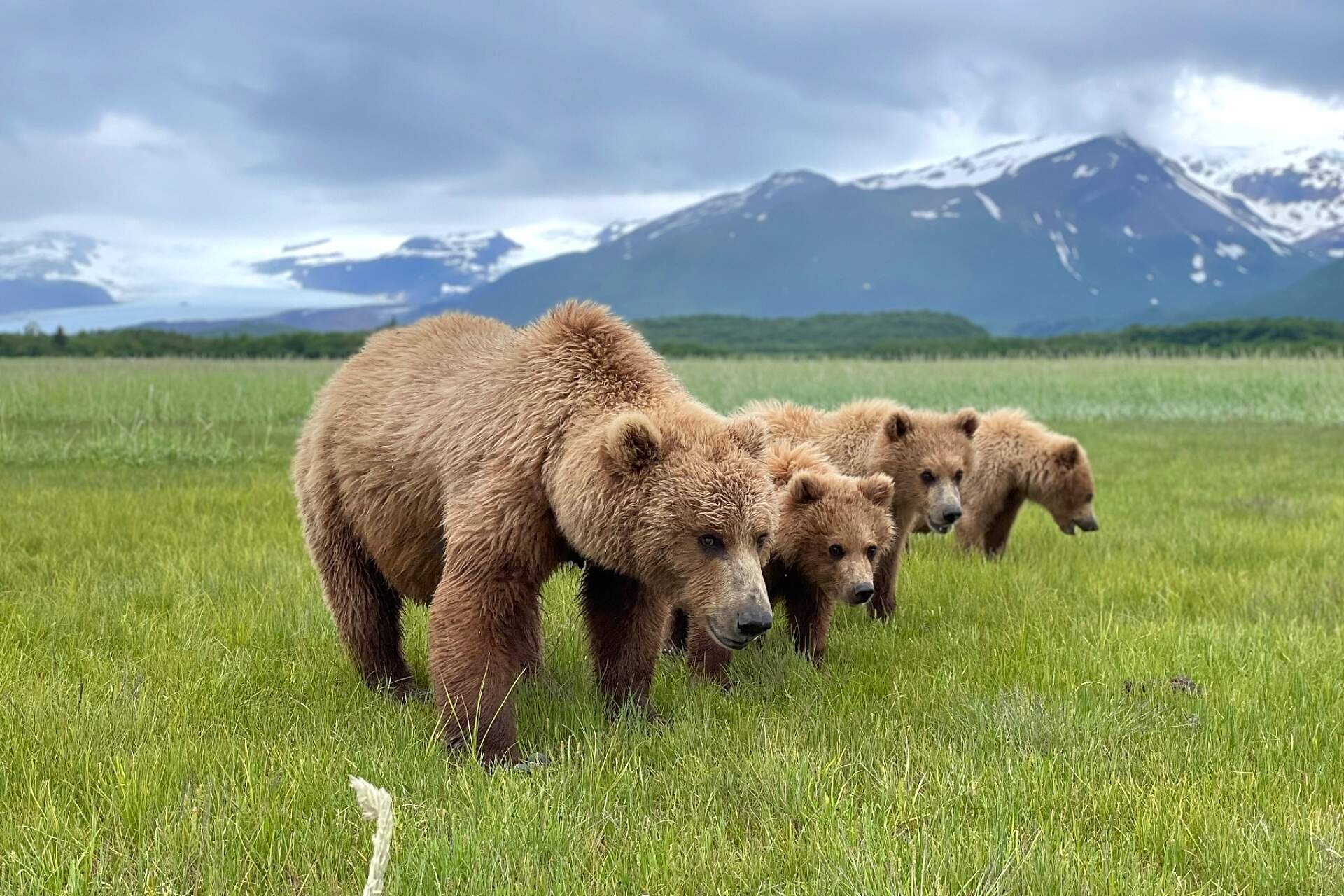
Photo by Yarin Feigenbaum
Similar to lodges, yacht-based trips allow several days to see bears. A typical day includes breakfast on the boat, followed by a skiff ride to shore to view the bears on land. These boats cruise the Katmai and Lake Clark coasts and carry just 6–8 guests for an average of 4–7 nights. Some boats offer other excursions as well, such as kayaking or fishing. For a 4-to 8-day trip, count on spending around $5,800 per person.
4. Denali Park Road
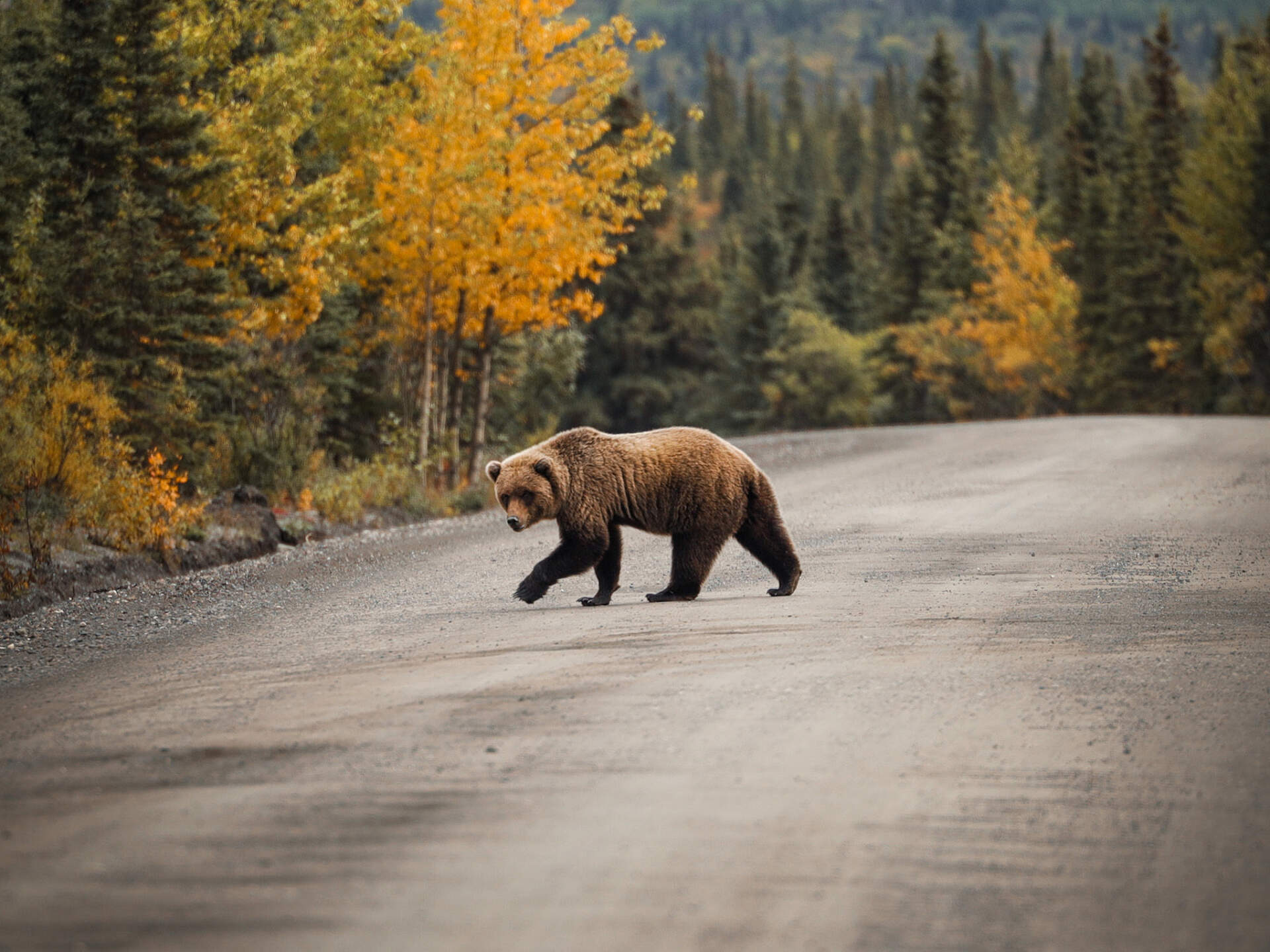
Photo by Thomas Hickey
A bus tour on Denali Park Road is not a dedicated bear-viewing tour. However, it's worth mentioning because it is one of the most accessible and budget-friendly options that gives you a good chance of seeing bears. Why? The national park service limits public access to the 92-mile Park Road, which has kept Denali truly wild. The downside is that the sightings may not be very close, so bring binoculars. Some buses even have an onboard camera that zooms in on wildlife and projects the image to a screen so everyone can get a closer look. The Park Road is open from June through mid-September. Bus trips cost $160–$ 200 per person for an excursion of 8-plus hours.
Where are the polar bears?
Polar bears are only seen in the Arctic, the state's northernmost part. They spend most of their time at sea on the ice, but in the late summer and early fall come ashore on Barter Island to rest and feed on leftovers from local Alaska native subsistence whale hunts in the Inupiat village of Kaktovik. During this narrow window, you can join a tour from Fairbanks with Northern Alaska Tour Company. You’ll fly to Kaktovik with a guide, get in an open-air boat and watch the bears from the water. It’s common to see multiple bears feasting on a single whale carcass. Because bear sightings align with the subsistence hunts, these tours are only available for a month each year, from August 25–September 25. Trips are around $2000 per person for a 12-hour expedition. Note that 2023 bear tours are not currently operating. Stay tuned for tour reopening information for 2024.
What If You’re Cruising?
If you’re taking a cruise of Alaska’s Inside Passage, you’re even less likely to just happen upon a bear. Instead, book a fly-in bear viewing tour as your shore excursion. Here are our recommendations:
Anan Wildlife Observatory (from Ketchikan)
Anan offers the unique experience of seeing both brown and black bears simultaneously. They congregate at Anan Creek, which has one of the most extensive runs of pink salmon in Southeast Alaska. Fly in from Ketchikan; then it’s a ½-mile walk through the lush, temperate rainforest to the observatory. Viewing is from the raised platforms, viewing decks, and observation tower. Permits are limited to 60 per day, so book early. You’ll find outhouses, a covered viewing shelter, raised walking platforms, and a photo blind. Access is restricted to guided groups only, unless you arrive via your own plane or boat. Trips start at around $300, and the season is from July 5–August 25.
Pack Creek Wildlife Viewing Site (from Juneau)
Admiralty Island, 30 minutes by floatplane or boat from Juneau, is known as the Fortress of the Bears and is home to about 1,500 brown bears. At Pack Creek, you’ll find a viewing spit, an observation tower, and a park ranger offering information. You can go independently by purchasing a required permit and chartering an air taxi or boat, but most guests book an excursion that includes an air taxi, guide, and permit fee. Permits are limited to 24 per day, and half go to guiding companies, so unguided travelers need to buy in advance. They go on sale each year on February 1. It’s $800+ for a guided tour, or a $50 permit plus the cost of an air taxi.
The season is May 1–September 15; the peak season for best bear viewing due to salmon runs, mating season, and clamming times is early May- June 10 & July 15 - Sep 15.
This is a remote wilderness area, so you won’t find bathrooms or shelters.
Fly-In Bear Viewing Options from South-Central Alaska
Suppose you’re flying into Anchorage or Fairbanks and are doing a self-drive or railroad tour of Alaska. In that case, your best bet is a fly-in trip departing from Anchorage or the nearby Kenai Peninsula towns of Kenai, Soldotna, or Homer. You’ll board a small float or wheel plane and fly west across Cook Inlet to Lake Clark or Katmai National Park. Depending on the time of year, your pilot and guide will take you wherever the bears are. However, you may want to plan your dates around a specific viewing experience. Here are the details:
Brooks Falls (Katmai National Park)
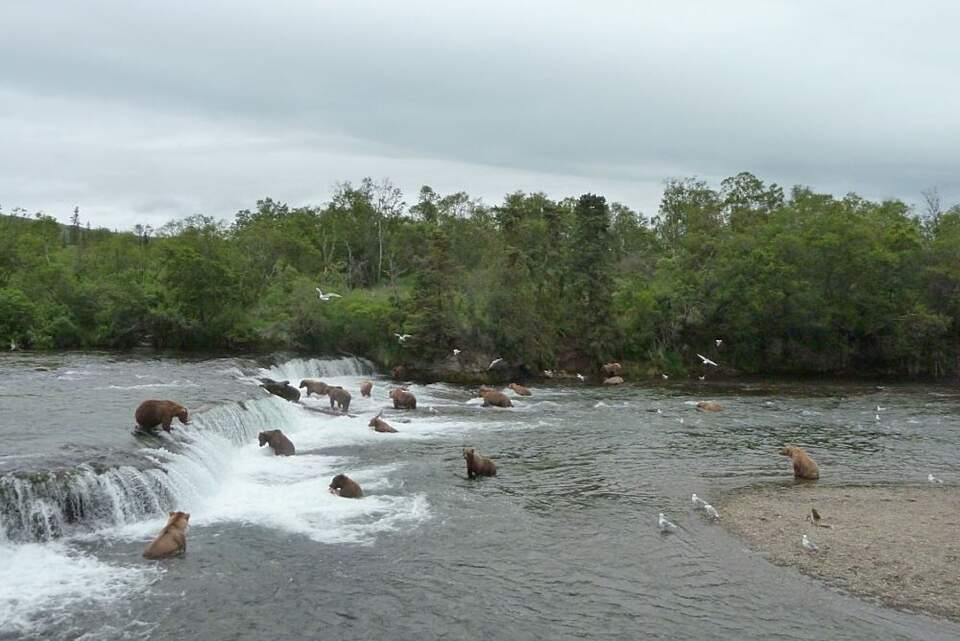
Photo by the National Park Service
Tours from anchorage, Kenai / Soldotna, Homer, King Salmon, and Kodiak
If you’ve ever seen footage of bears swatting at salmon as they furiously try to make their way upstream, it likely came from Brooks Falls—one of the most photographed and filmed places in all of Alaska. In fact, the destination itself is like a celebrity sighting because it’s so well known. During the summer peak season, when the salmon are running, it’s common to see 10 or so bears, and there could be as many as 40! Fly in for the day from Anchorage or Homer, or stay overnight at Brooks Camp and explore from the four viewing platforms. Expect crowds.
Who's it for?
Anyone wanting to see a lot of bears in the very spot they know from famous photos. Also, Brooks has a lodge with food and bathrooms, which is more than you’ll find at any other remote bear-viewing location. Choose to stay there if you want multiple days with the bears, or if you want to go check out the park’s other highlight, the Valley of 10,000 Smokes.
Budget
$940+ per person (day trip)
Season
Brooks is open from June through September. Peak viewing is in July and September when the salmon are running.
Katmai National Park
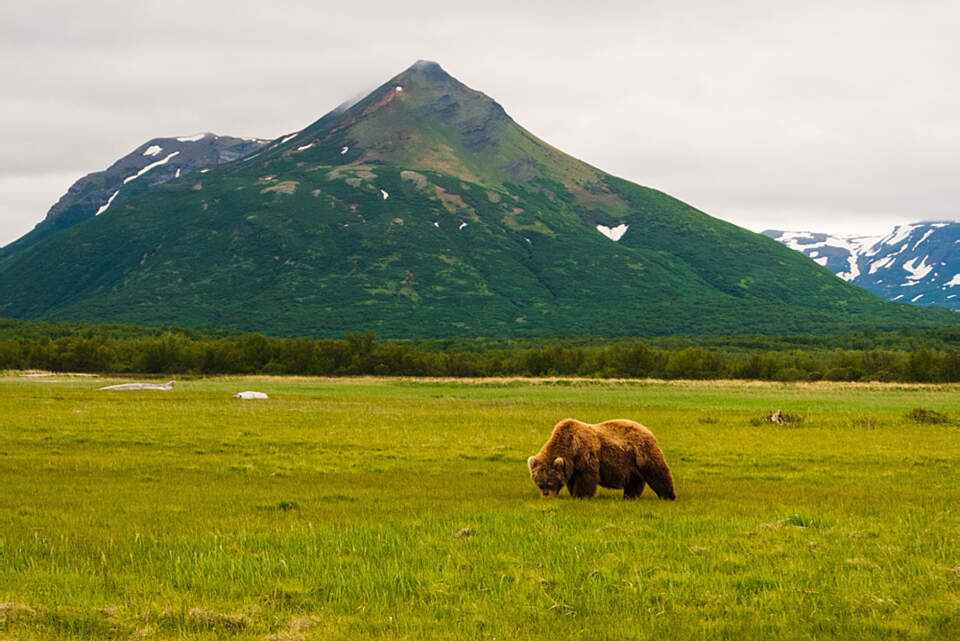
Photo by Jaime Hammond
Tours from Anchorage, Kenai / Soldotna, Homer, King Salmon, and Kodiak
While Brooks Falls is the most popular spot in this park to see bears, it’s not the only one; other areas (like Hallo Bay, Geographic Harbor, and Moraine Creek) also offer stellar viewing experiences. They’re just more remote. You may have to hike a few miles, and you won’t see as many bears in one spot as you will at Brooks. The tradeoff? You’ll be completely removed from the crowds and get the chance to watch bears in their natural environment. In May and June, you might see them feeding on sedge grass and digging for clams, while from July to September, you may witness them feeding on salmon.
Who's it for?
Someone who wants a remote experience, has the mobility to walk a few miles, and is comfortable being in the wilderness with a guide and without facilities (like bathrooms).
Budget
Air taxi/tour: $690–$1,050 (tours that depart from Anchorage are more expensive than Homer or Kodiak)
Season
June through mid-September
Lake Clark National Park
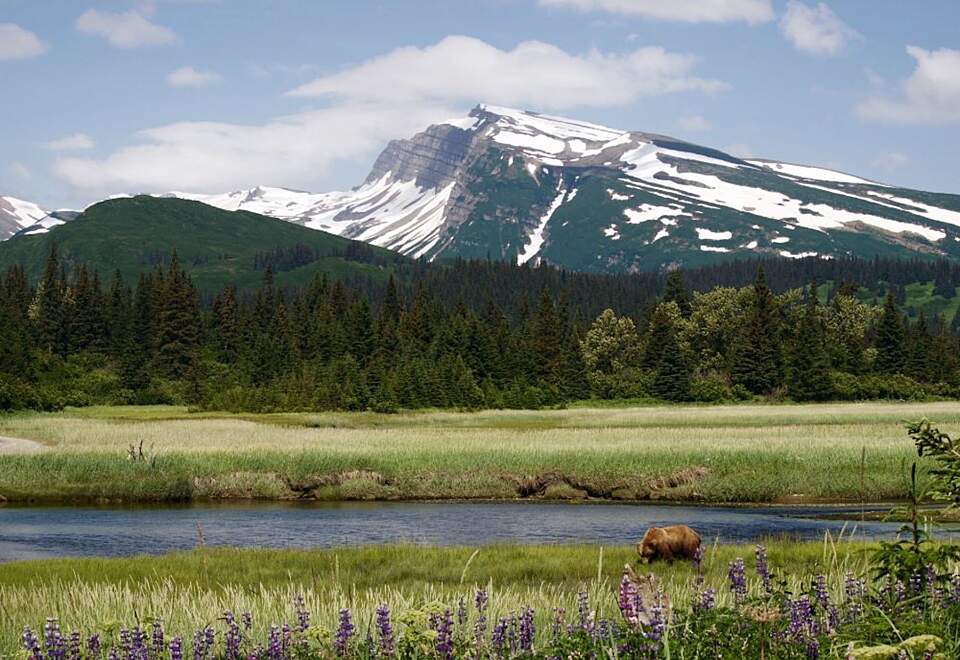
Photo by the National Park Service
Tours from Anchorage, Kenai / Soldotna, Homer, King Salmon, and Kodiak
There are several locations to view bears in this 4-million-acre park. In Chinitna Bay and Silver Salmon Creek, you’ll land on the beach and walk to see the bears. At Crescent Lake, you’ll likely view them from a boat while they fish from shore.
Who's it for?
If you want a variety of options for seeing bears. You can do it on an unforgettable day trip from Anchorage, Homer, or Kenai/Soldotna. Fly-in trips may also be based from a lodge, while others are remote; you land on the beach and hike to your viewing area.
Budget
$690+ per person. Tours from Anchorage are more expensive than from Homer.
Season
Mid-May–September
